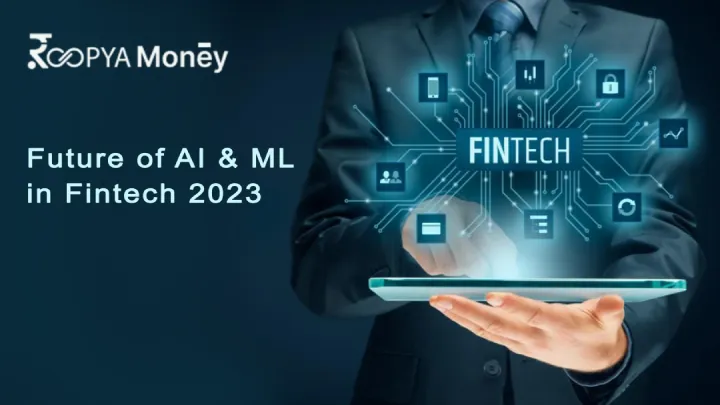Thanks to Artificial Intelligence and Machine Learning, global digital lending is on a fast growth track. AI and ML have become the master players in digital lending who have changed the entire game by easing the documentation process and correcting credit risk analysis. AI has data-backed credit decisions, which effectively creates user personas and identifies similar applications in the future. Let’s understand the role of AI and ML in digital lending by discussing some high-impact areas that AI and ML have influenced.
Automating loan application process – AI and ML are smart enough to assess loan applications and rule out the successful ones which are likely to be paid on time. They can help Banks and NBFCs in making more informed decisions by quickly processing customer data. Interestingly, the loan processing for MSMEs has seen drastic changes after the implementation of GST. Since the GST implementation, digital infrastructures have been used for taking proactive reforms to transform the way MSMEs are financed. With every passing second, these digital infrastructures are said to be progressing toward the next and more advanced stage of automation, which aims to make the entire process convenient and quick.
Automated underwriting – Limited credit histories are the main problem for MSMEs. AI and ML have predictive modeling, which aids customer data analysis and helps in assessing the creditworthiness of small businesses and custom tailoring the loan terms according to their needs. This makes assessing credit and managing debt easier for MSMEs. Before the advent of AI and ML in digital lending, the underwriting process had its limitations regarding data availability and therefore was done at bank branches.
Underwriting at bank branches includes manual intervention to check the data authenticity and then take credit calls. But now, the majority of data that is required for underwriting is digitally available, and all the technologically advanced banks and institutions are shifting towards the Artificial Intelligence supported automated underwriting process.
Credit scoring models – Artificial Intelligence and Machine Learning have advanced data analytics for assessing the creditworthiness of borrowers, which helps in approving more loans and offering better rates to MSMEs. The AI performs credit risk analysis by examining several data, which includes financial and non-financial data.
AI-powered financial institutions use this data to consider transaction history, cash flow, and supplier and customer relationships, which ultimately provides a wider perspective of an MSME’s creditworthiness. The traditional scoring models were particularly restricted to credit information in the past, which is not effective for providing 360-degree information on MSMEs; in contrast, the future AI-based credit scoring models are based on multiple data points such as GST, bank accounts, income tax, and many other data formats.
Personalizing lending experience – Machine Learning and Artificial Intelligence have machine learning algorithms that aid lenders in customizing their services and products depending on the needs and preferences of individual borrowers. Today, lenders use voice assistants, chatbots, and user-friendly interfaces to communicate and engage with borrowers. Customer service automation increases a personalized lending experience for MSMEs, which increases customer satisfaction and generates loyal customers. AI-based learning algorithms consider borrowers’ specific circumstances and create personalized repayment plans. It facilitates fraud detection and leads to timely loan repayment.
Customer Acquisition – There has been a dramatic change in customer buying journeys over the years, and AI can help lenders understand the behavioral footprints of customers and predict possible business outcomes based on it. The predictive analytics of AI-based digital lending tools can predict how likely a customer is willing to purchase a lending product and understand the customer’s behavior.
Derive Actionable Insights: Artificial Intelligence and Machine Learning simply analyze clickstream data, browsing, and other data to predict the intent and interest of the customer. Depending on the data, customers are categorized into must reach, requires more effort, and are not interested. Later, the categorization helps in deciding the way of approaching customers and ensuring engagement. Apart from predictive analytics and fraud detection, AI can also help in building effective marketing campaigns to create more leads and convert existing leads into customers.
Ensure Accurate Decision-making – Machine learning comes under the umbrella of Artificial Intelligence and helps in making a more practical strategy. ML uses algorithms and statistical models for real-time analysis of huge data sets. When combined and used strategically, together AI and ML can help lending institutions identify, sort, and make precise decisions based on vast research and multiple data points. Besides, ML can also figure out any anomalies in the behavior or pattern of usage after allocating credit. The decisions of ML are primarily based on the payment history, which enables it to help users make more informed financial decisions.
AI and ML in Fraud Detection – Finance and Fintech world is full of uncertainties, and fraud is one such uncertainty. Even the most precaution-taking and named fintech companies can encounter fraud cases if they don’t have a reliable fraud detection system. The AI and ML in digital lending uses multiple variables that include bureau score, behavioral pattern on a particular platform, etc. to analyze a customer before finalizing a credit decision.




